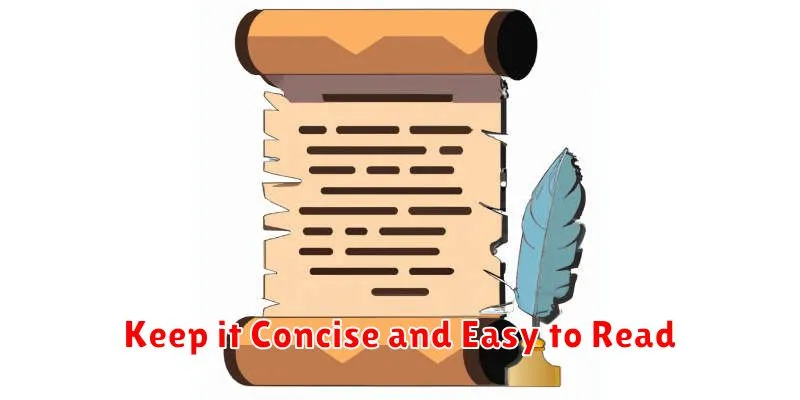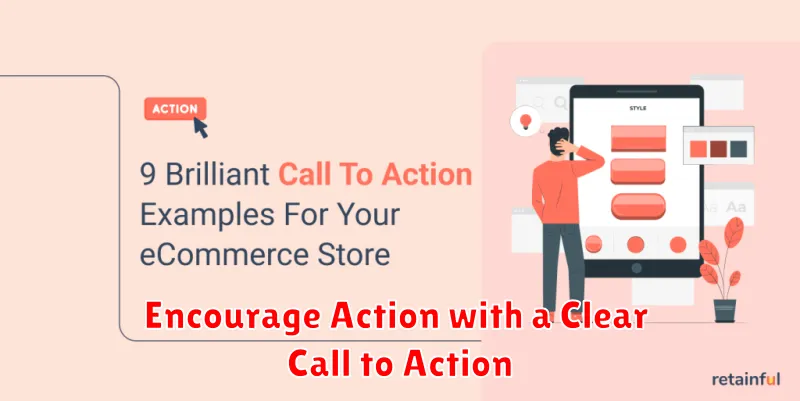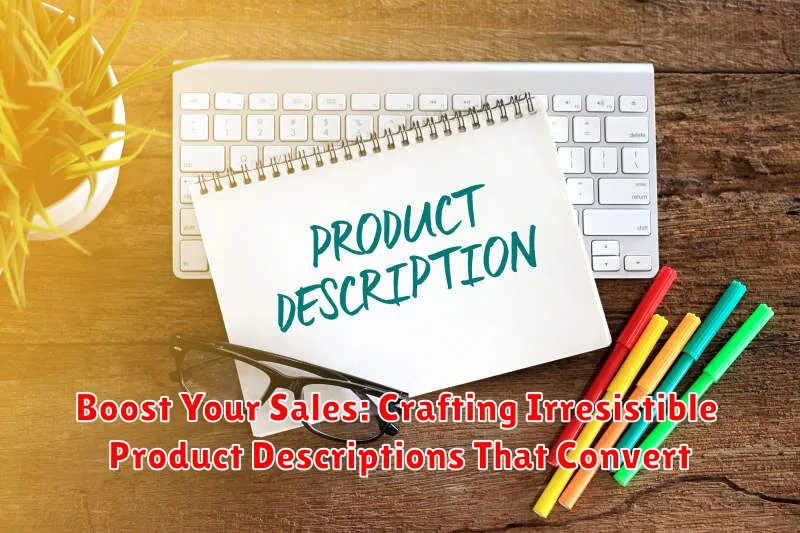In today’s competitive market, crafting compelling product descriptions is paramount to boosting sales. A well-written product description can be the deciding factor between a conversion and a lost customer. This article will explore the key elements of creating irresistible product descriptions that convert, transforming casual browsers into paying customers. We’ll delve into strategies that go beyond simply listing features, focusing instead on highlighting benefits and crafting persuasive narratives that resonate with your target audience, ultimately helping you boost your sales.
Learn how to strategically use keywords for improved search engine optimization (SEO) while simultaneously captivating your audience with engaging language. Discover the secrets to writing product descriptions that sell by focusing on the value your product offers and demonstrating how it solves a customer’s problem. From understanding your ideal customer to using persuasive language and compelling calls to action, this article will equip you with the tools you need to write high-converting product descriptions and significantly boost your sales.
Know Your Audience: Speak Their Language
Crafting compelling product descriptions starts with understanding your target audience. Who are they? What are their needs, desires, and pain points? Speaking directly to your ideal customer is crucial for converting casual browsers into paying customers.
Consider their demographics, lifestyle, and values. Are they tech-savvy millennials, busy professionals, or budget-conscious families? The language you use should resonate with their specific background and experiences. Avoid jargon or technical terms they might not understand. Instead, use clear, concise language that speaks to their needs.
For example, if your target audience is young athletes, you might highlight the product’s performance-enhancing features and trendy design. If you’re targeting busy parents, you might emphasize convenience and ease of use.
Highlight Key Features and Benefits
Clearly showcasing your product’s key features and benefits is crucial for converting browsers into buyers. Don’t just list specifications; translate them into tangible advantages for the customer. Focus on what the product does for the customer, not just what it is.
For example, instead of simply stating “500GB hard drive,” highlight the benefit: “Store thousands of photos and videos without worrying about running out of space.” This approach makes the feature relevant and desirable to the potential buyer.
Use bullet points or short paragraphs to present these features and benefits concisely. This allows for easy scanning and quick comprehension. Consider using a table to compare different product versions or highlight key differentiators, making the decision-making process easier for the customer.
Focus on Solving Customer Problems
Customers don’t buy products; they buy solutions. Your product descriptions should clearly articulate how your product addresses a specific customer pain point. Frame your descriptions around the problems your product solves and the positive outcomes customers can expect.
Instead of simply listing features, explain the benefits those features provide and how they directly alleviate a problem. For example, rather than stating “This vacuum has a HEPA filter,” explain that “Our HEPA filter traps 99.97% of dust mites and allergens, providing relief for allergy sufferers and contributing to a healthier home environment.”
Emphasize the value proposition of your product by highlighting its problem-solving capabilities. Ask yourself: What challenges does my target audience face? How does this product make their lives easier, better, or more enjoyable?
Use Vivid Language and Sensory Details
Dry, technical descriptions don’t entice customers. Instead, use vivid language and sensory details to paint a picture of how the product looks, feels, smells, tastes, or sounds. Bring your product to life in the customer’s imagination.
For example, instead of saying “soft fabric,” consider “luxuriously soft cashmere that drapes elegantly.” Instead of “quiet motor,” try “whisper-quiet operation that won’t disturb your sleep.” These details create an emotional connection and make the product more desirable.
Consider the following examples:
- Weak: “Comfortable chair.”
- Strong: “Sink into the plush, velvet cushions of this exquisitely comfortable armchair, perfectly angled for ultimate relaxation.”
By engaging the senses, you move beyond simply describing the product to evoking a feeling and experience. This makes the product more memorable and compelling, increasing the chances of a purchase.
Tell a Story: Engage Your Readers
Connect with your audience on an emotional level by weaving a narrative around your product. Don’t just describe the item; illustrate how it enhances their lives. A compelling story can transform a simple product into a desirable object filled with meaning and purpose.
Consider these approaches to storytelling:
- The “Problem/Solution” Narrative: Present a relatable challenge your target audience faces and position your product as the solution. This resonates deeply with customers seeking relief from a specific pain point.
- The “Day in the Life” Scenario: Depict how your product seamlessly integrates into a typical day, showcasing its practicality and benefits in a realistic context. Let readers envision themselves using your product effortlessly.
- The “Origin Story”: Share the inspiration or journey behind your product’s creation. This adds a personal touch and can create a sense of authenticity and connection with your brand.
By incorporating narrative elements, you transform a dry product description into an engaging experience that captures attention and fosters a stronger connection with potential buyers.
Optimize for Search Engines: Use Relevant Keywords
Search engine optimization (SEO) is crucial for driving organic traffic to your product pages. By strategically incorporating relevant keywords, you increase the likelihood of your products appearing in search results when potential customers are actively looking for what you offer.
Keyword research is the foundation of this process. Identify the terms your target audience uses when searching for products similar to yours. Tools like Google Keyword Planner can assist in discovering high-volume, low-competition keywords.
Integrate keywords naturally within your product descriptions. Avoid keyword stuffing, which can negatively impact your search ranking and readability. Focus on creating informative and engaging content that accurately reflects the product’s features and benefits while seamlessly incorporating relevant keywords.
Consider using long-tail keywords, which are longer, more specific phrases that target niche searches. For example, instead of just “shoes,” try “women’s running shoes for trail running.” These longer phrases often have less competition and can attract highly qualified leads.
Show, Don’t Just Tell: Back Up Claims with Proof
Consumers are savvy. They don’t just take your word for it. Instead of simply claiming your product is “the best,” “high-quality,” or “long-lasting,” substantiate these claims with concrete proof. This builds trust and credibility.
Provide specific details and quantifiable data to support your assertions. For example, instead of saying a battery lasts “a long time,” state it lasts “up to 30 hours on a single charge.” If your product is “durable,” mention it’s “made from aircraft-grade aluminum” or “passed rigorous drop tests.”
Customer testimonials and reviews are powerful tools. Feature positive feedback from satisfied customers to demonstrate real-world experiences with your product. Consider incorporating ratings and awards as well. Showcase any certifications or independent testing results that validate your product’s claims.
Keep it Concise and Easy to Read

In today’s fast-paced world, brevity is key. Consumers are often overwhelmed with information, so concise product descriptions are crucial. Get straight to the point, highlighting the most important features and benefits. Avoid jargon or technical terms that might confuse your target audience.
Readability is equally important. Use short sentences and paragraphs to make your descriptions easy to scan. Bullet points can be a highly effective way to present key information clearly and concisely. This allows potential customers to quickly grasp the value your product offers without feeling bogged down by walls of text.
Consider using headings and subheadings to break up longer descriptions and further improve readability. This also improves the visual appeal and encourages engagement.
Encourage Action with a Clear Call to Action

A compelling product description isn’t complete without a clear call to action (CTA). This directs the customer on what to do next after they’ve been captivated by your product’s features and benefits. A vague CTA or its complete absence can lead to lost sales, even if the rest of your description is stellar.
Effective CTAs are more than just “Buy Now.” They create a sense of urgency and guide customers towards the desired action. Consider using phrases like “Shop Now & Get Free Shipping,” “Limited Time Offer: Order Today,” or “Claim Your Discount Before It’s Gone.” These examples not only tell the customer what to do, but also incentivize immediate action.
The placement of your CTA is equally important. Position it prominently, often at the end of the description, after you’ve presented all the compelling reasons to purchase. This ensures the CTA is the last thing the customer sees, reinforcing the message and encouraging conversion.

